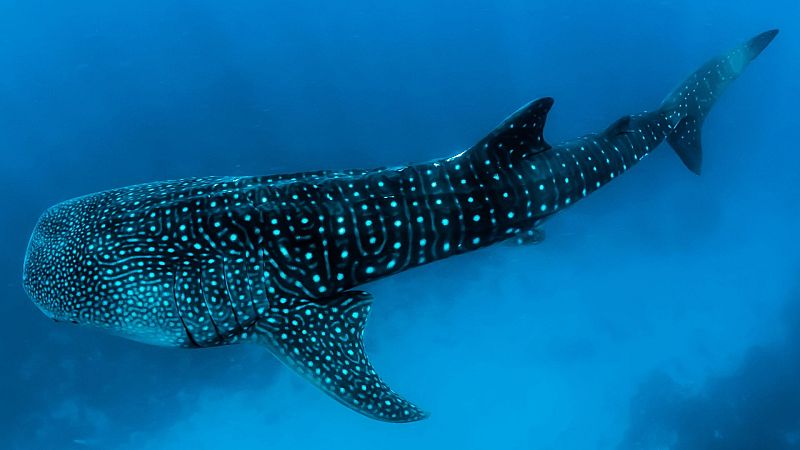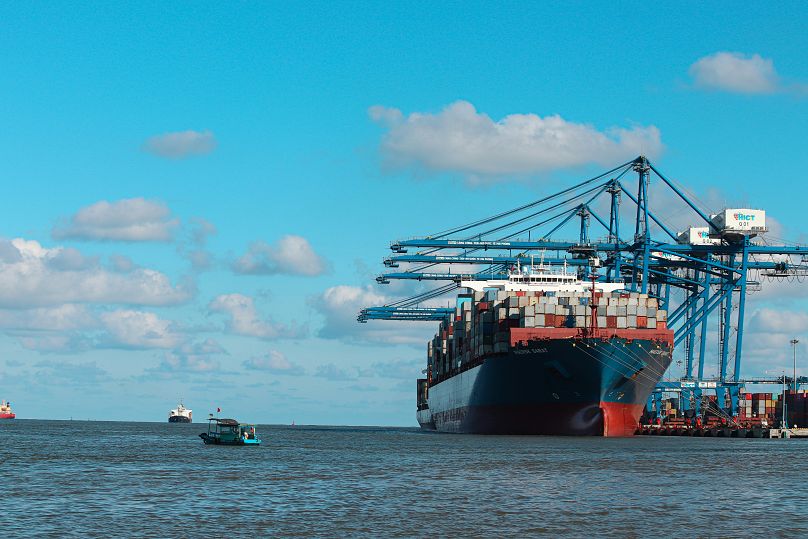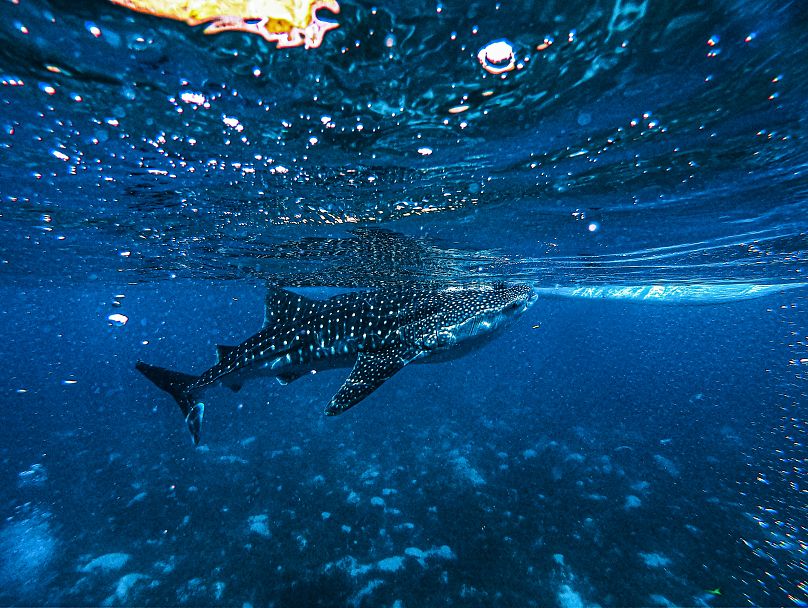The climate crisis may cause more whale shark collisions with ships - here’s why

Rising ocean temperatures could increase the threat to endangered whale sharks from large ships, researchers say.
Scientists from the UK’s University of Southampton and the Marine Biological Association are predicting that warmer seas, driven by the climate crisis, will provoke whale sharks into seeking new habitats - leading them into the path of busy shipping lanes.
The study in the journal Nature Climate Change calculates that by the end of the century, collisions between whale sharks and large ships could be 15,000 times higher than they currently are.
Why are whale sharks more vulnerable to ships than other fish?
Whale sharks are the world’s largest fish, with the largest-ever-recorded whale shark clocking in at 18.8 metres. The endangered species inhabits open waters of tropical oceans, rarely venturing into water with temperatures below 21°C.
Recent evidence shows that whale sharks are particularly vulnerable to ‘ship strikes’ - where marine animals are struck and injured or killed by large vessels - because they spend their time in surface waters and gather in coastal regions. The species is also highly mobile and responsive to changes in temperature.
Study lead author Dr Freya Womersley says, “Our study suggests that even the world’s largest fish is in danger from climate change. We found that preferred ocean habitats for whale sharks shifted in future, sometimes into completely new locations, often with cooler waters.
“If the sharks move into these newly habitable spaces, it may provide them some respite from climate change, but it could also inadvertently expose them to risks such as unintentional fisheries capture, prey mismatches and collisions with ships.”
Whale sharks could lose over half their habitat in some seas
The study combined satellite-tracking data of whale sharks with global climate models to predict the future distribution of the fish under three different climate scenarios.
These distribution maps were paired with shipping traffic density to see if whale sharks would move into heavily trafficked areas, potentially increasing the likelihood of ship strikes.
Under a high emissions scenario (where the world continues to rely heavily on fossil fuels), the study predicted core habitat losses of over 50 per cent in some national waters by 2100. In this scenario the greatest potential losses would be in Asia.
A sustainable development scenario (in line with the target of no more than 2°C of global warming) led to a predicted gain in core habitat, notably in Europe.
Researchers call for government action to protect marine animals
“Although our results are alarming, they are also positive and show that we do have the capacity to change the population trajectory for whale sharks and other endangered marine megafauna,” Dr Womersley tells Euronews Green.
“Through mitigating climate change, we can indirectly ensure that the ocean is a safer place for some of its largest residents. We already know which strategies to trial for limiting collisions between ships and sharks - like slowing speeds and re-routing around key sites - and it is now up to individual governments to take action,” she adds.
Dr Womersley recommends governments and marine managers aim to incorporate quantitative climate-threat predictions such as this study into future conservation efforts. In this way, protections will be adaptable and resilient to all climate model scenarios.
Yesterday



